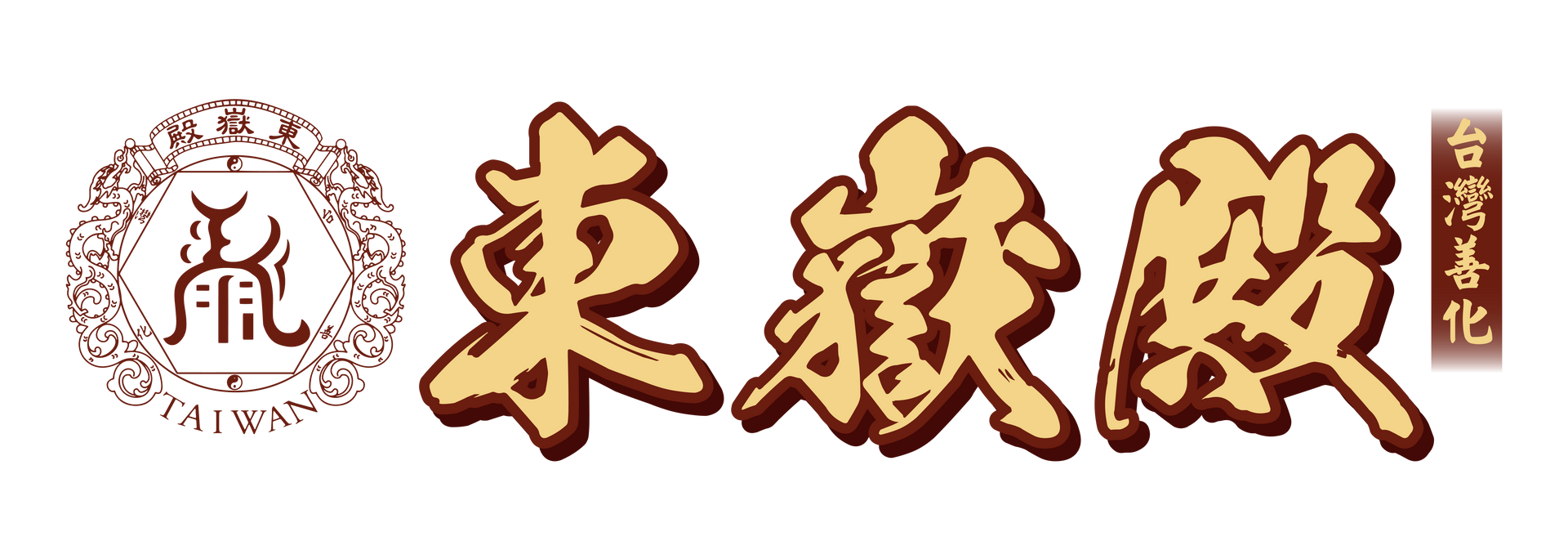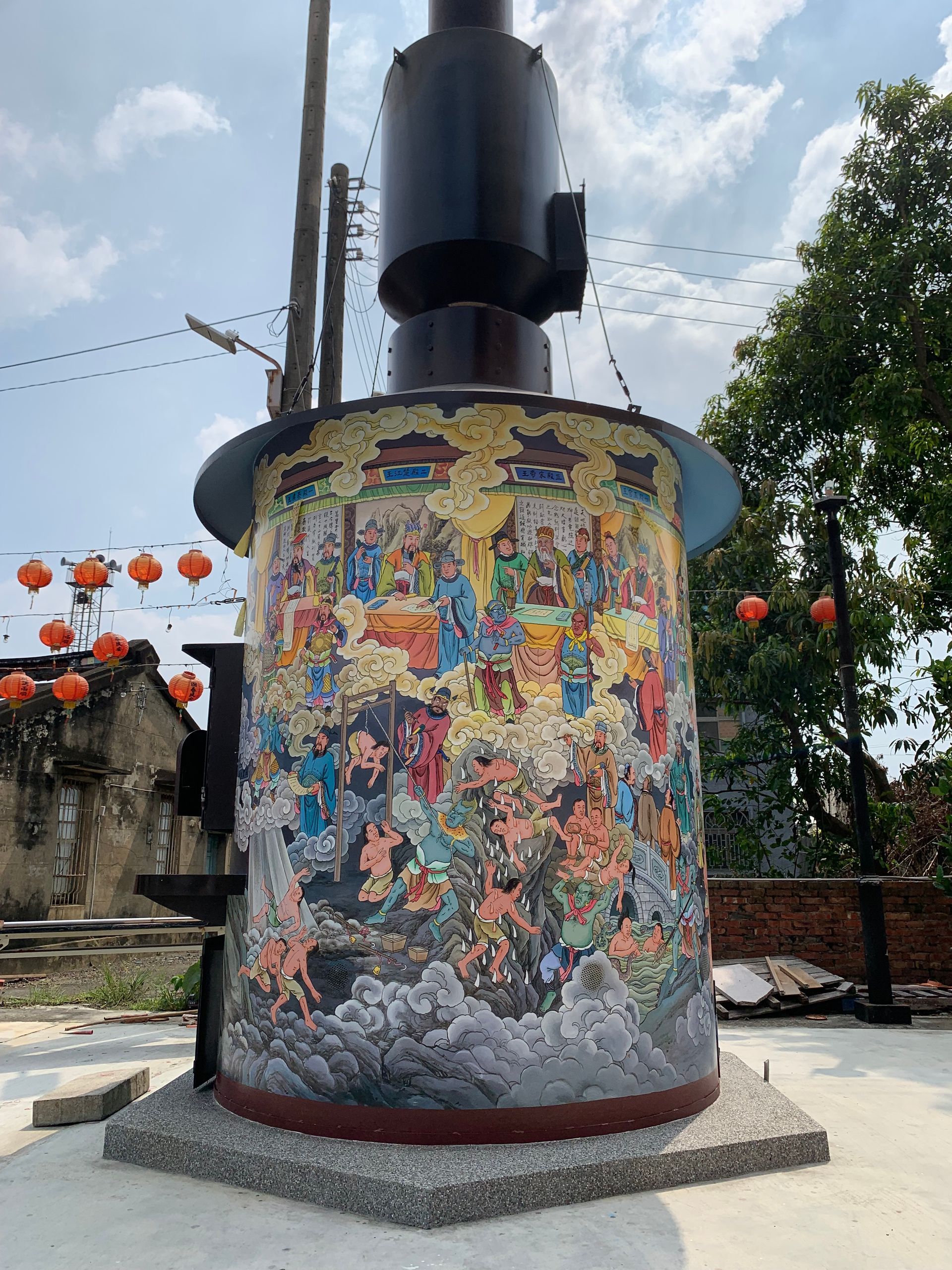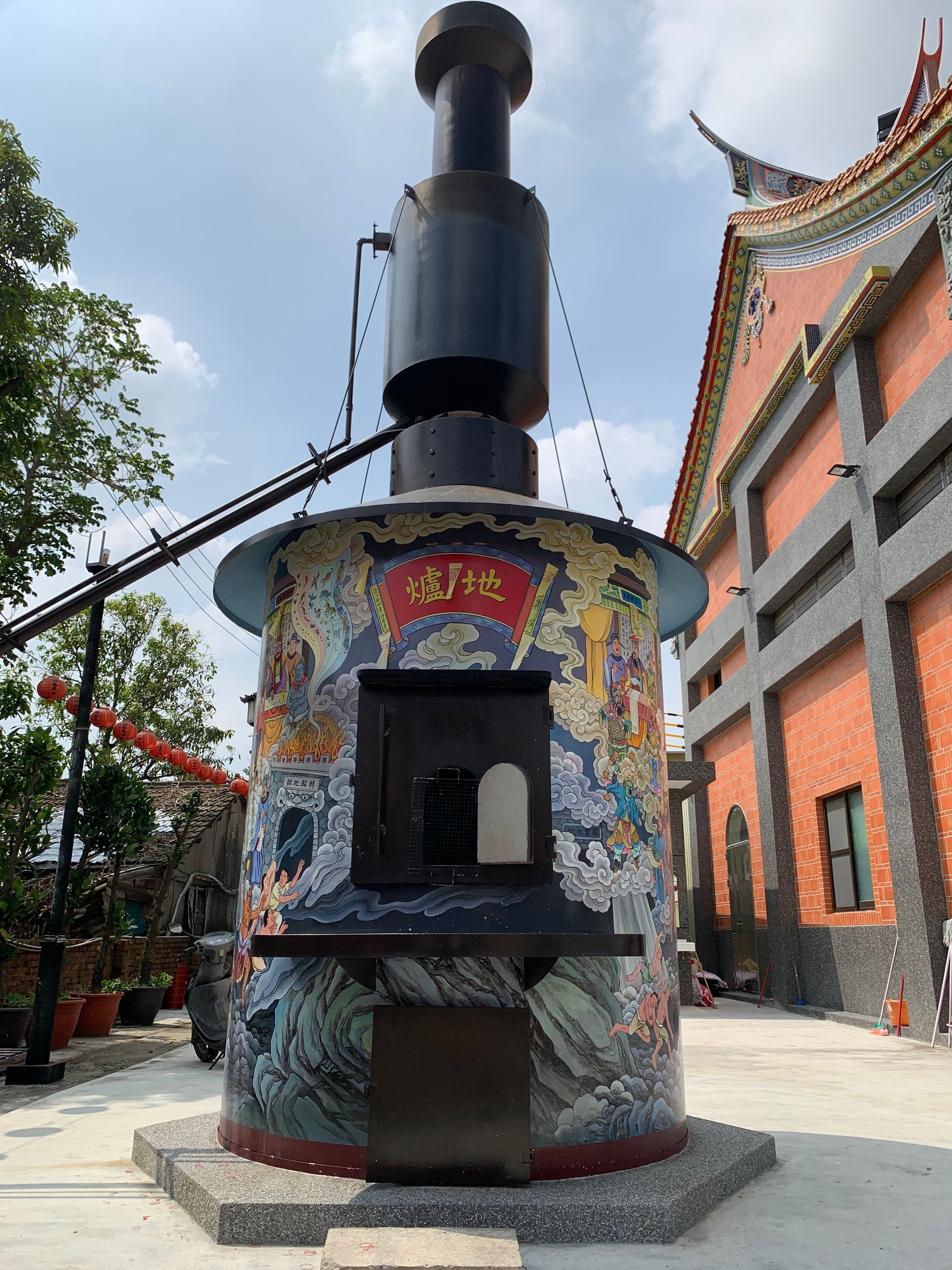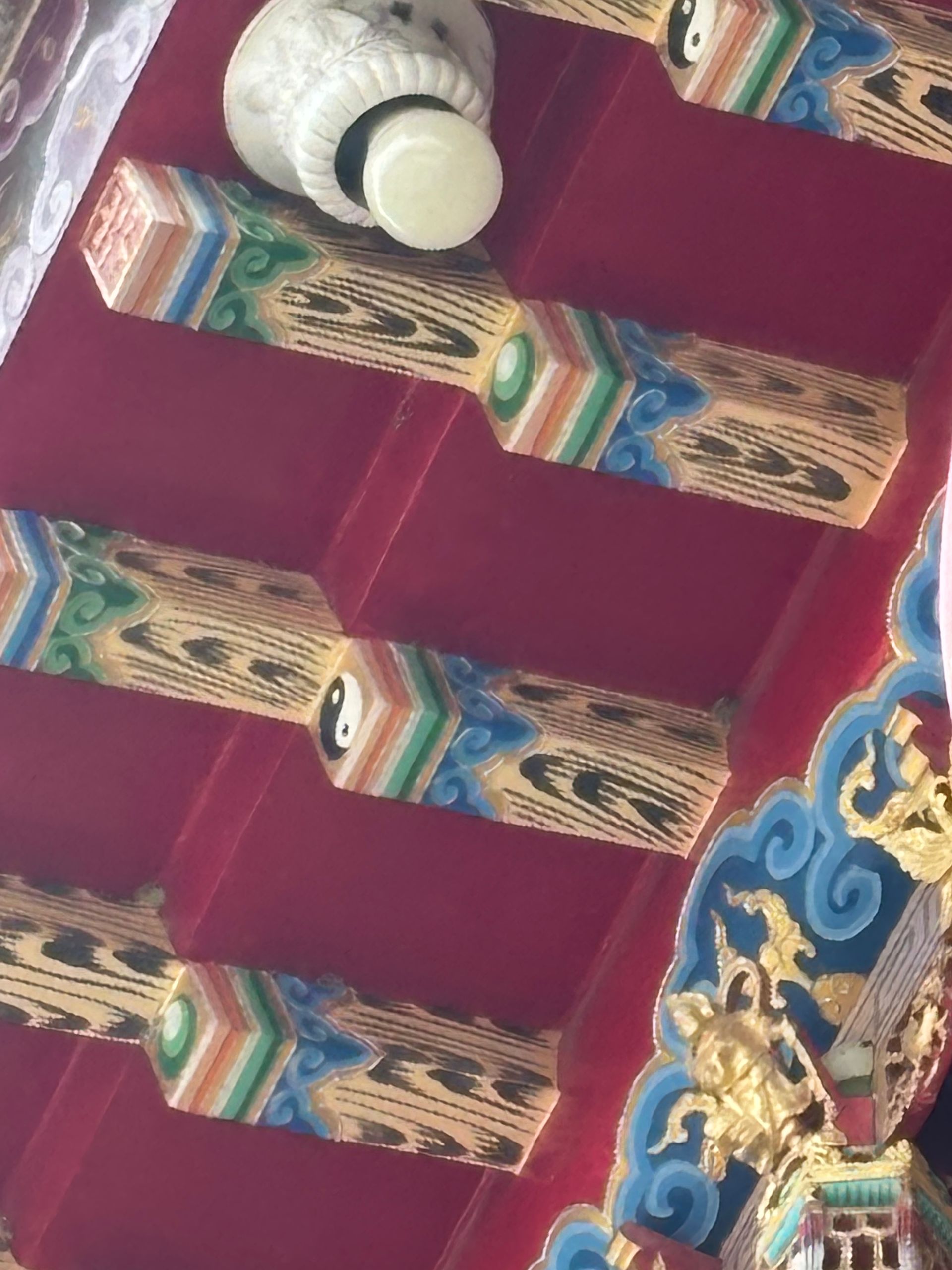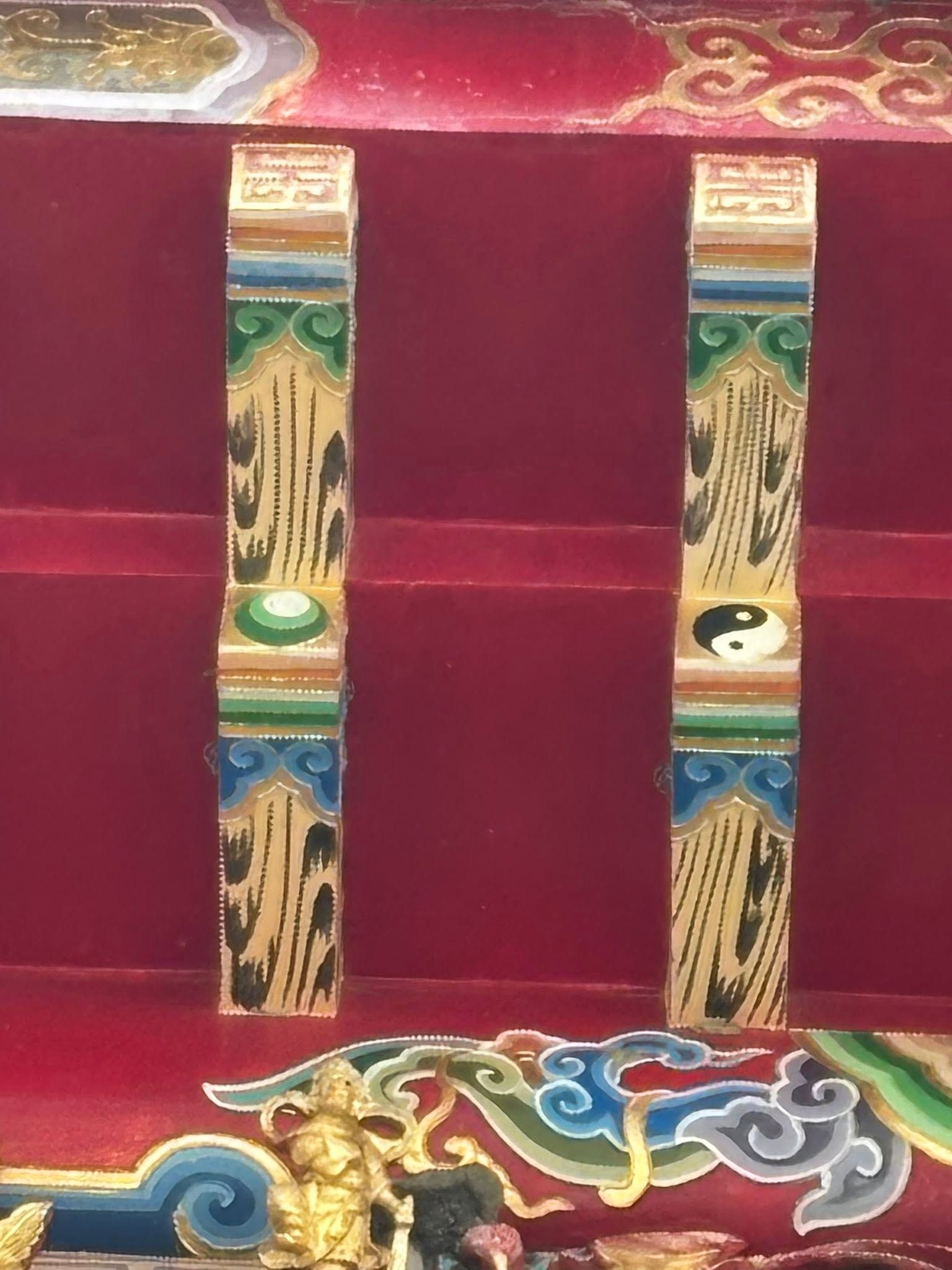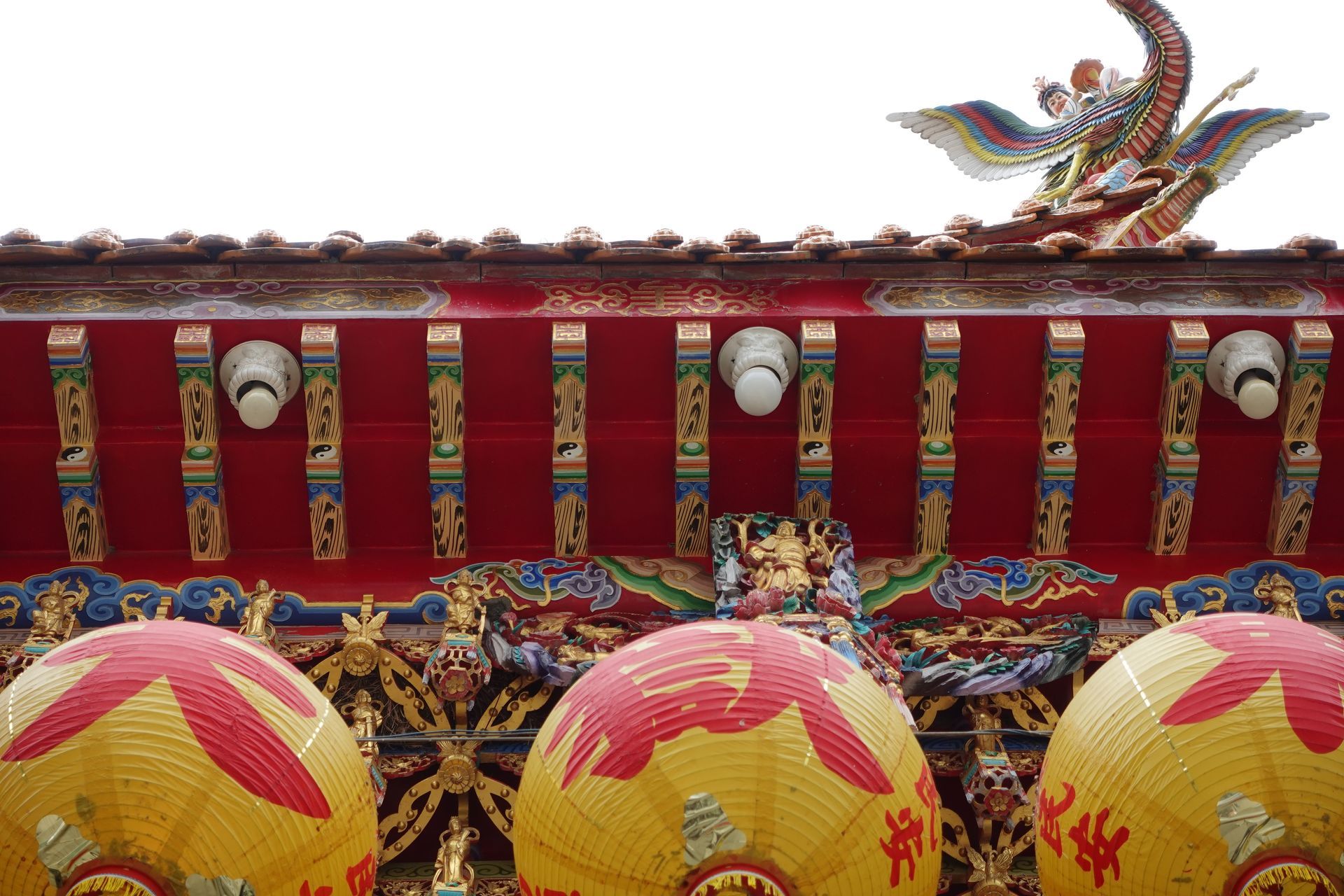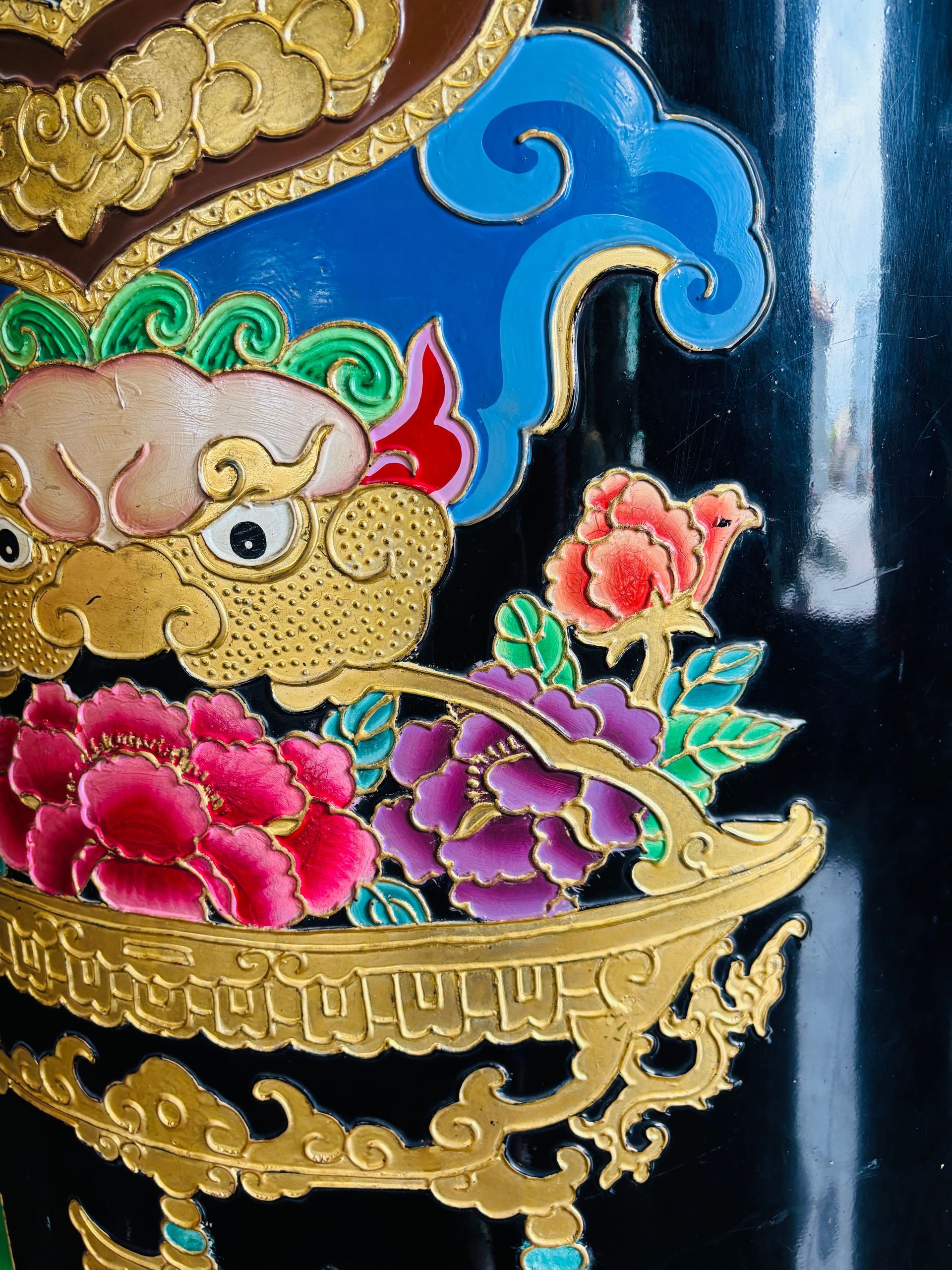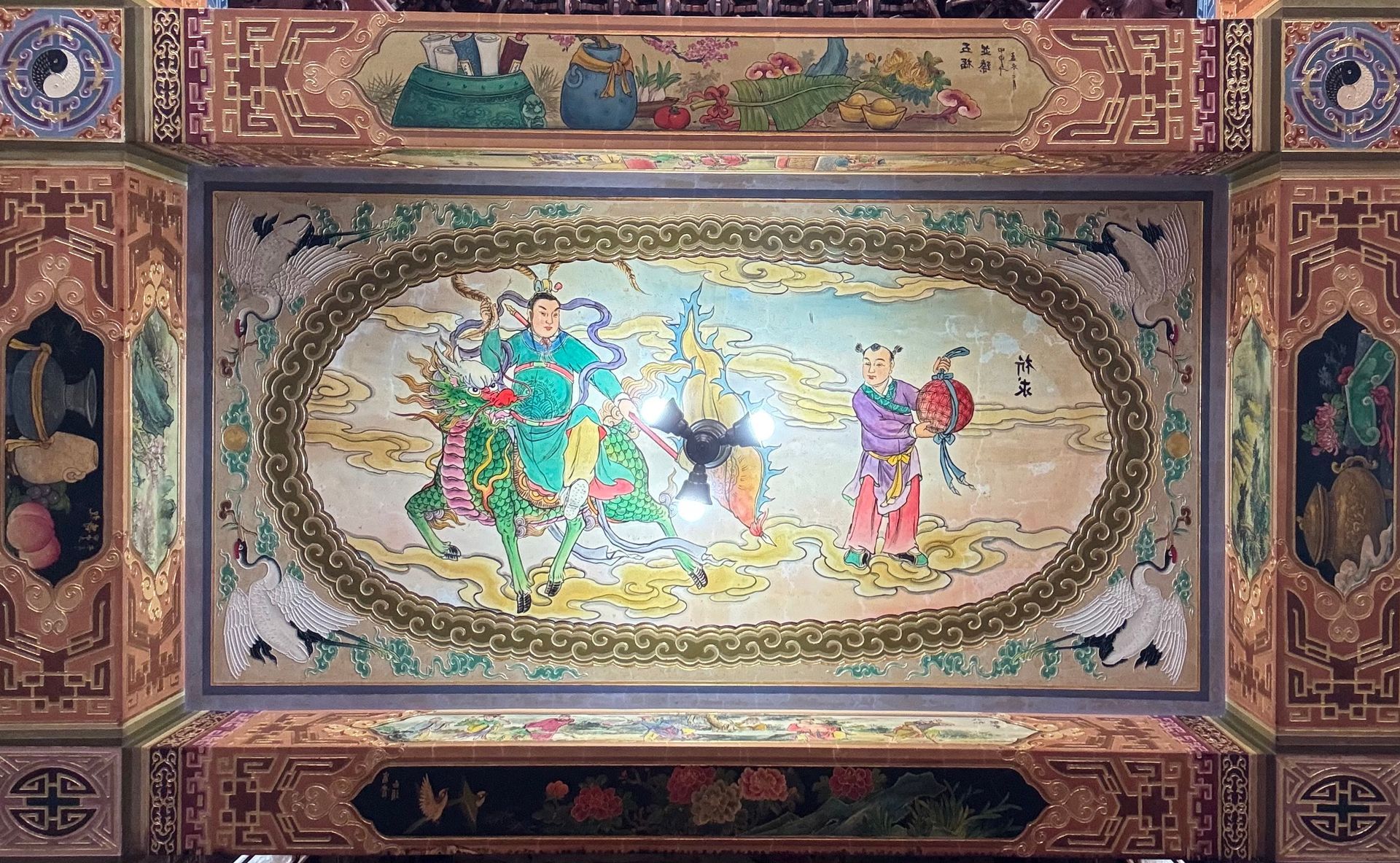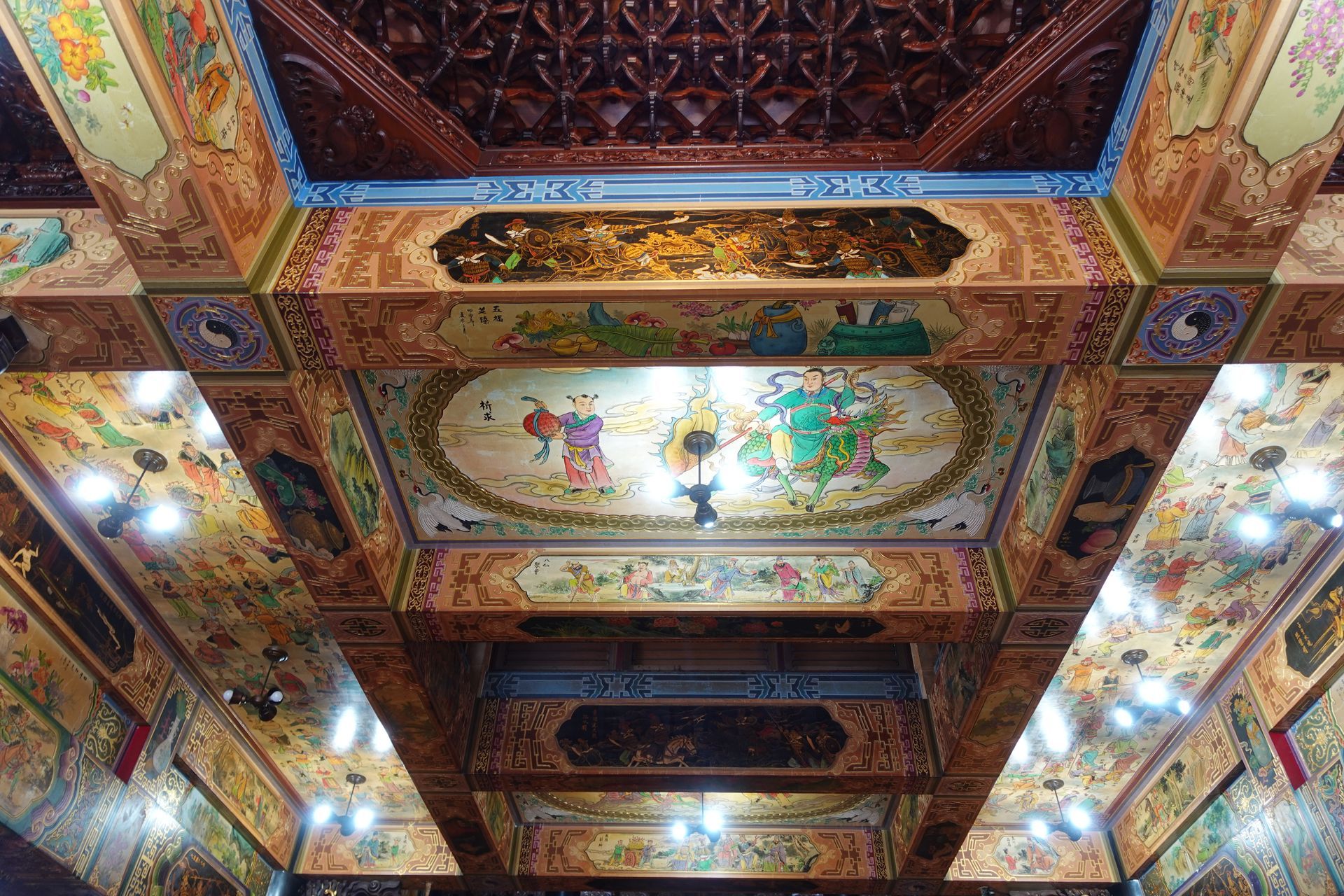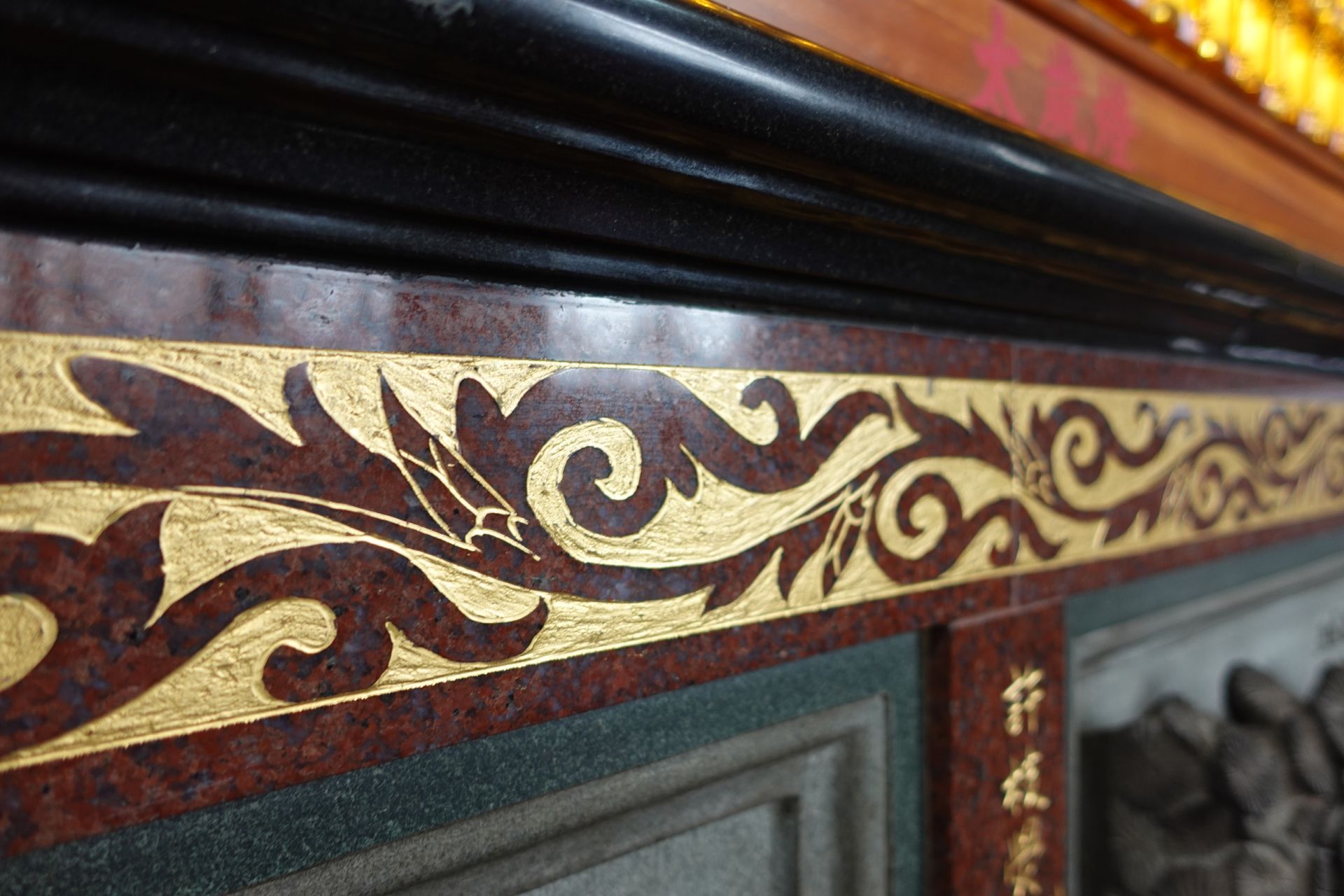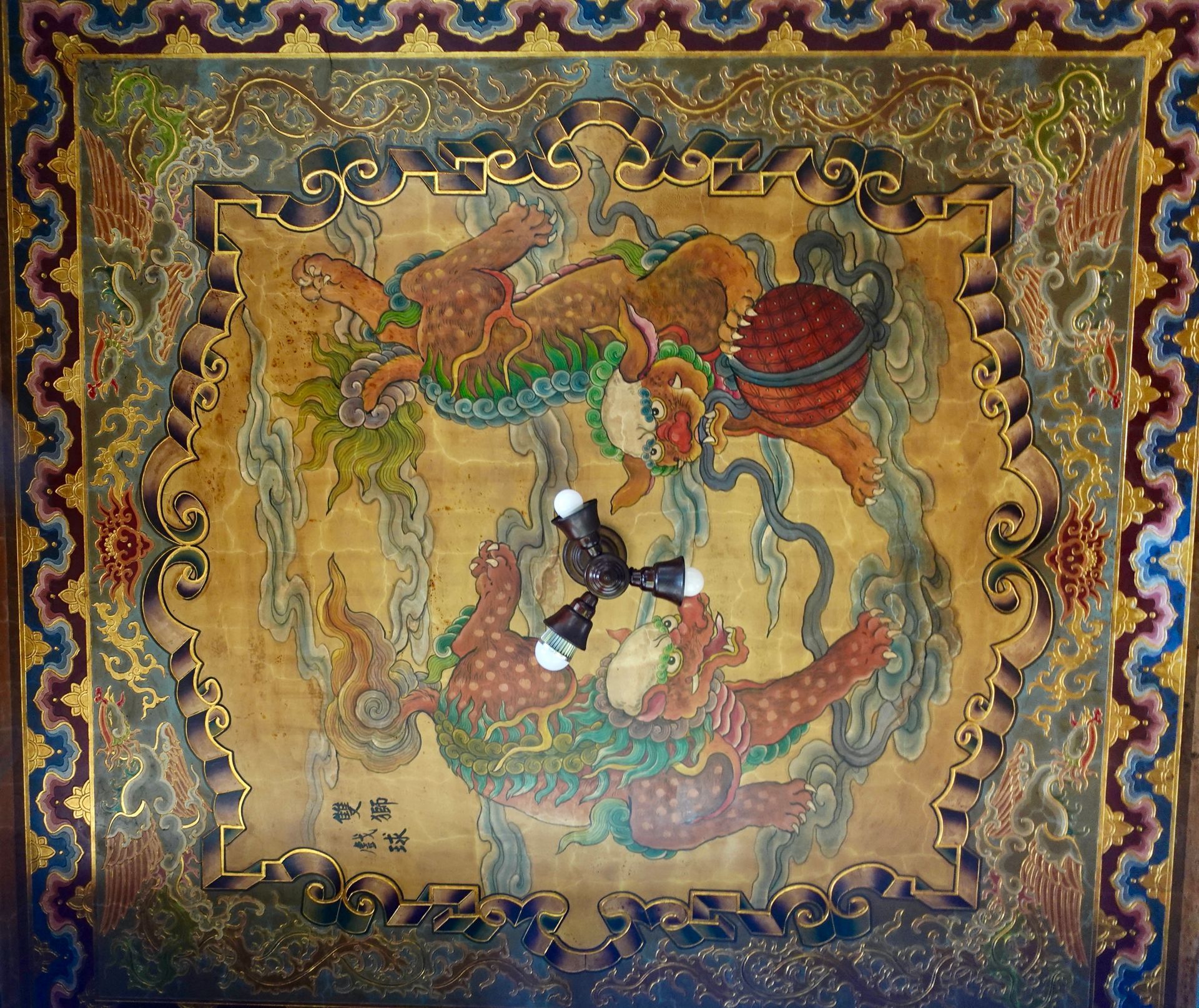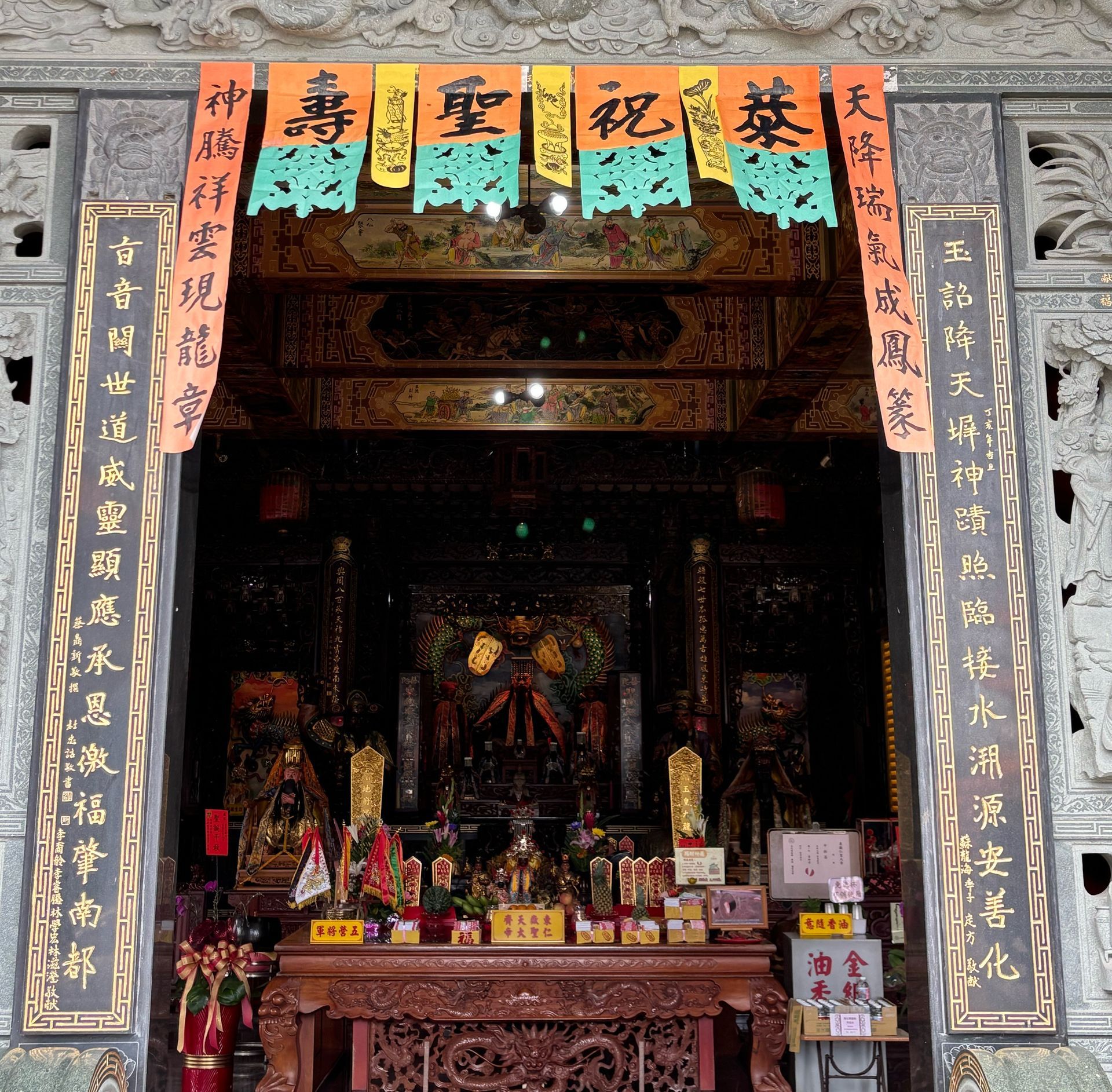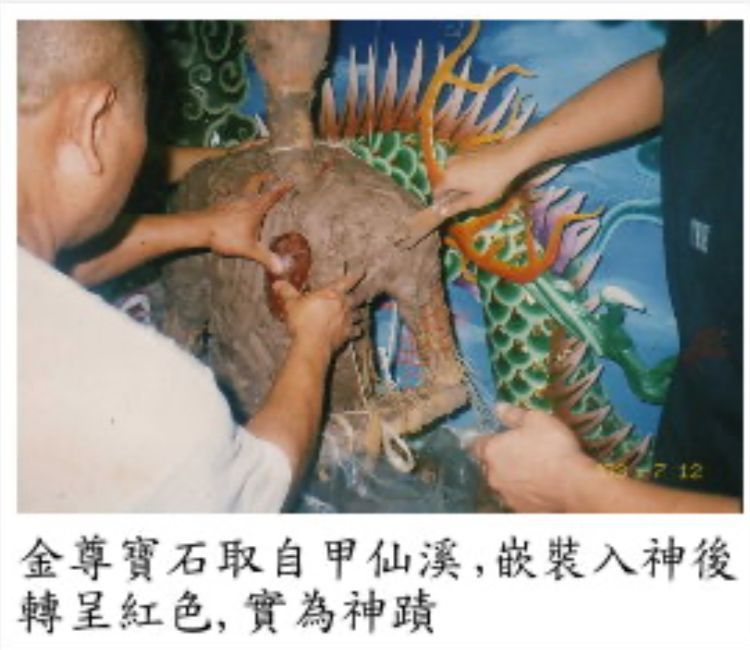Temple Crafts
From paintings to statues, explore the craftsmanship and historical memory of artisans
Painted tin ceiling
The Ten Hells of Hell Earth Cauldron, a fusion of craftsmanship and faith
The terracotta statue in front of the Dizang Temple was custom-made from tinplate and designed by the temple. Incorporating the theme of the Ten Courts of Hell, it conveys a message of moral enlightenment and moral counseling. The artwork, composed by artist Liu Wuji, includes images of the ten kings of the underworld, and he personally painted the exterior of the terracotta statue. The meticulous composition and solemn expression create a unique style.
To ensure the painted layers can withstand the intense heat of burning paper money and the harsh weather of the open air, the temple commissioned renowned painter Master Xu Geyi and his team, Hong Yi Xing Engineering Co., Ltd., to apply a specialized, high-temperature-resistant primer and oversee the entire painting process. Years after its completion, the painting and primer remain pristine, a testament to the temple's unwavering commitment to craftsmanship and cultural spirit.
While tinplate tripods are not uncommon, those with fully painted themes are rare and challenging to maintain. Like all other craftsmanship within the temple, the temple's tinplate paintings are regularly maintained, restored, and preserved by a team of master craftsmen, Xu Geyi, to ensure the preservation of this artistic and spiritual legacy.
Painter Liu Wuji, who has long copied the works of national treasure-level master Pan Lishui, has cultivated a profound skill and earned the reputation of being "unrivaled" in the temple painting world. He is a man of integrity and profound accomplishment, never judging others' faults. He diligently completes any challenging task and is dedicated to supporting younger generations, earning him the respect of his peers. Temple paintings have always embodied cultural values of benevolence, righteousness, morality, and admonition, and the painter's own moral cultivation is a crucial reflection of this spirit.
Therefore, the temple carefully invited craftsman Xu Geyi and painter Liu Wuji to work together to complete this painted tripod with the theme of the Ten Courts of Hell. It not only demonstrates the ultimate craftsmanship, but also inherits the profound human ethics and faith spirit in Taoist culture.
Author: 102 Wenchuan 30025 Xu Geyi, painter, Liu Wuji
Tiger skin flower painting
Among the architectural details of the Shanhua Dongyue Temple, an often overlooked corner, the "corner," actually contains the profound meaning of traditional Taiwanese temple architecture.
In the past, temples were mostly constructed of wood, and tiger-skin flower horns were a representative example of these traditional decorations. However, with the increasing adoption of reinforced concrete (RC) structures in modern architecture, the beauty of these wooden structures has gradually faded from public view.
To preserve the beauty of the craftsmanship, Dongyue Hall invited renowned painter Xu Geyi to recreate these vanishing details using a wood-like painting technique on the exposed concrete structure. Drawing on over four decades of experience, Master Xu personally painted all the paintings inside and outside the hall, using traditional, homemade "hair brushes"—brushes crafted from undyed, natural hair, a technique now extremely rare.
The most distinctive feature of the tiger-skin flower horn painted in this hall is its three-dimensional form, painted on three sides. Each angle requires precise control of the wood grain and compositional proportions. The horn tail is finished with lacquer lines and infused color, adding a delicate layer of depth and bringing the craftsmanship to a pinnacle of perfection.
Master Xu Geyi's daughter, Ms. Xu Yaxin, has also devoted herself to the field of religious art, sharing this precious cultural heritage with her father. She explains that this craft is not just a technique, but also a cultural chapter that tells a story.
Gold inscription on architectural paintings and couplets
Gold plating is one of the most representative traditional techniques in temple and palace architecture, often applied to beams, columns, brackets, and various decorative components. It symbolizes solemnity, sacredness, and prosperity. In the early years of the Shanhua Dongyue Temple, painter Xu Geyi was specially invited to complete the entire temple's painting and gold plating. Master Xu mixed his own "gold leaf paste" and used a unique gold plating method. Even after years of outdoor weathering, the gold surface remains lustrous and flaking-free, demonstrating the ultimate in craftsmanship. Master Xu's daughter, Xu Yaxin, also inherited her father's skills. In 2011, she completed her master's thesis, "A Study on the Differences Between the Process of Gold Leaf Paste and Its Finished Gold Plating—Using Wood and Stone as Examples." This work was published on the Taiwan Master's and Doctoral Dissertation Knowledge Value-Added System, integrating academic and practical expertise and leaving a significant record of Taiwan's traditional gold plating process.
Author: Xu Geyi, a painter and artisan, 102 Wenchuan 30025
Couplet Anjin
Temple couplets are a crucial expression of traditional Chinese aesthetics and religious culture. The pillar couplets for the Dongyue Temple in Shanhua were penned by Master Cai Dingxin, a Taiwanese poet and calligrapher of couplets. Ten renowned calligraphers, including Du Zhonggao, Xue Pingnan, Zhang Dingcheng, Zeng Andian, Chen Kunyi, Lian Shengyan, Hong Qiyi, Yang Chihao, and Wang Jiuru, were invited to contribute. Following completion, Master Xu Geyi applied each character using the inlaid goldsmith technique, seamlessly blending the beauty of calligraphy with the brilliance of goldsmithing. The resulting structure is imbued with both literary richness and a solemn and magnificent presence. In a world where traditional crafts are gradually fading, Dongyue Temple preserves this exquisite fusion of calligraphy and goldsmithing, a steadfast commitment to preserving and inheriting this cultural heritage.
Author: Xu Geyi, a painter and artisan, 102 Wenchuan 30025
Golden statue of the god in the temple
The temple's guardian deity, the golden statue of Emperor Dongyue, is meticulously crafted using traditional clay sculpture techniques. The overall production process not only demonstrates superb craftsmanship, but also contains many miracles and guidance of faith, making it a symbol of the core culture of this temple.
The statue was created by the concerted efforts of all the dedicated materials, following the instructions of Emperor Yue. The red clay used was sourced from Shanxi Province, China. A gemstone, sourced from the Jiaxian River, is embedded in the heart. The gem instantly turns red, reminiscent of the heart of life, a miraculous act that is truly moving. The skeleton is constructed from the trunk of a peach tree over thirty years old, the ribs from the joints of century-old thorny bamboo, and the blood vessels are crafted from the aerial roots of a thousand-year-old banyan tree, creating a sacred body that is both organic and spiritual.
Three relics, donated by Director Wang Yichuan, are enshrined within the statue, adding to its aura and dignity. Emperor Yue also instructed that a well be dug beneath the golden statue's seat. Indeed, a spring gushed out at a depth of 3.6 meters. Legend has it that this well connects to the water veins of the Taishan Ancestral Temple, making it one of the temple's most remarkable relics.
The deity statues in this temple were handcrafted by traditional clay sculptor Zheng Yingzhou, demonstrating meticulous technique, a sturdy form, and a profound spirit. These golden statues, the guardians of the temple, not only embody the deity's image but also embody the core of the faith. While the statues are revered as sacred bodies, their form remains fundamentally human—the skeleton, ribs, heart, and blood vessels are all modeled after the human body. By embodying the deity in human form, the faith becomes relatable, tangible, and revered.
When we discuss the display and education of temple culture, if we want to achieve the depth of cultural interpretation at the museum level, the craftsmanship, miracles, and symbolic meanings embodied by the statues guarding the temple must be an indispensable key core.
Author: Zheng Yingzhou, a traditional clay sculpture craftsman




